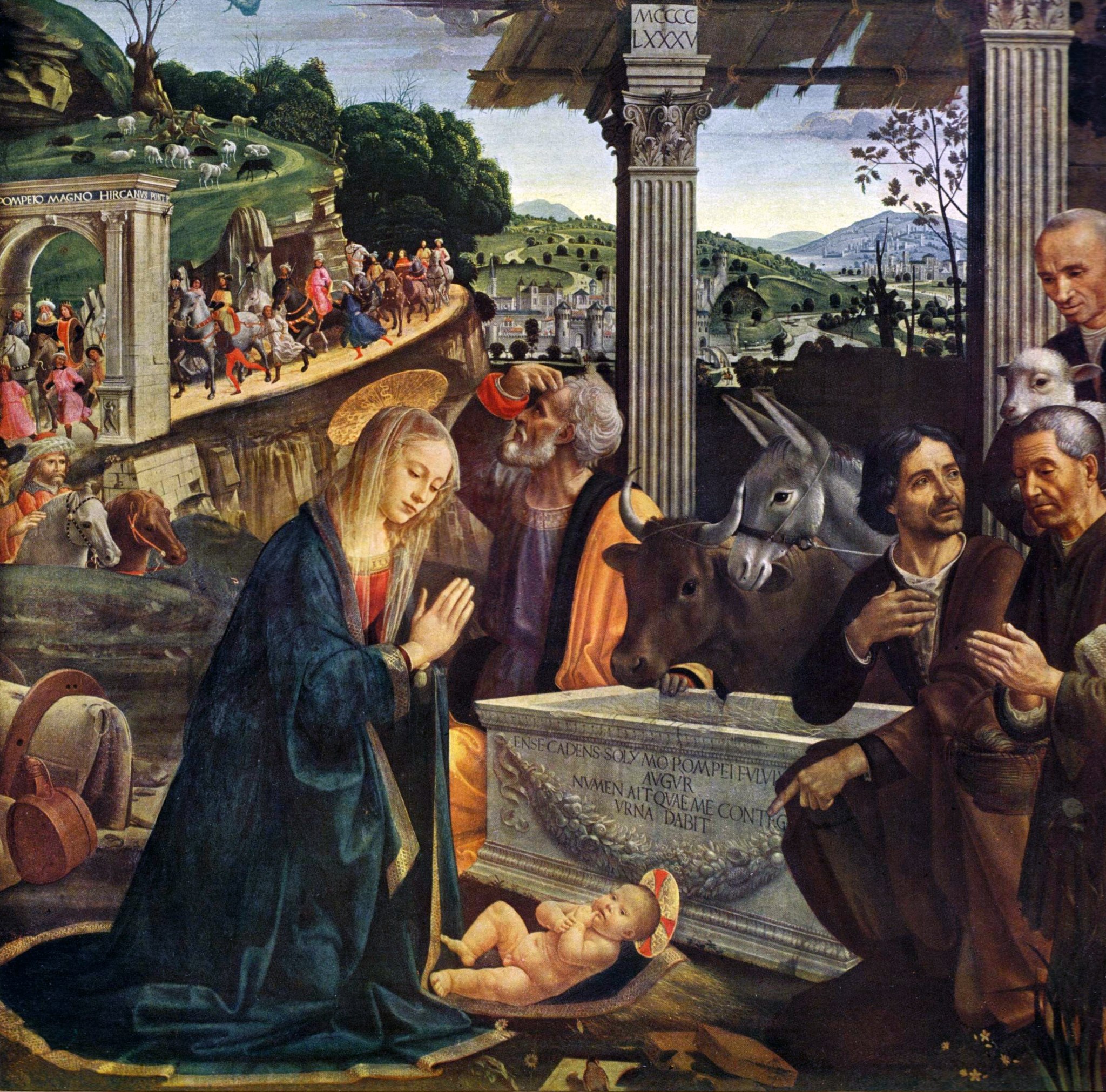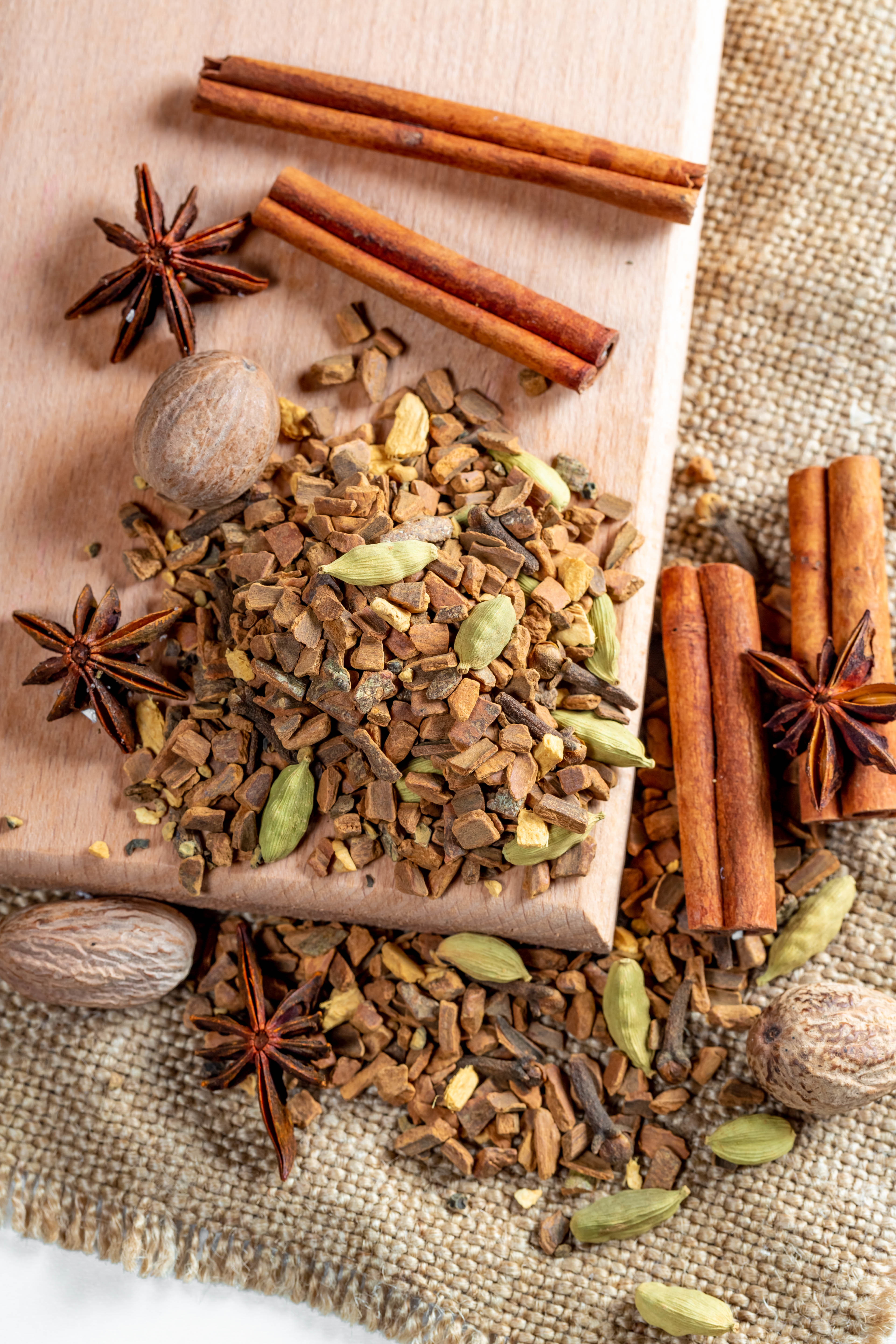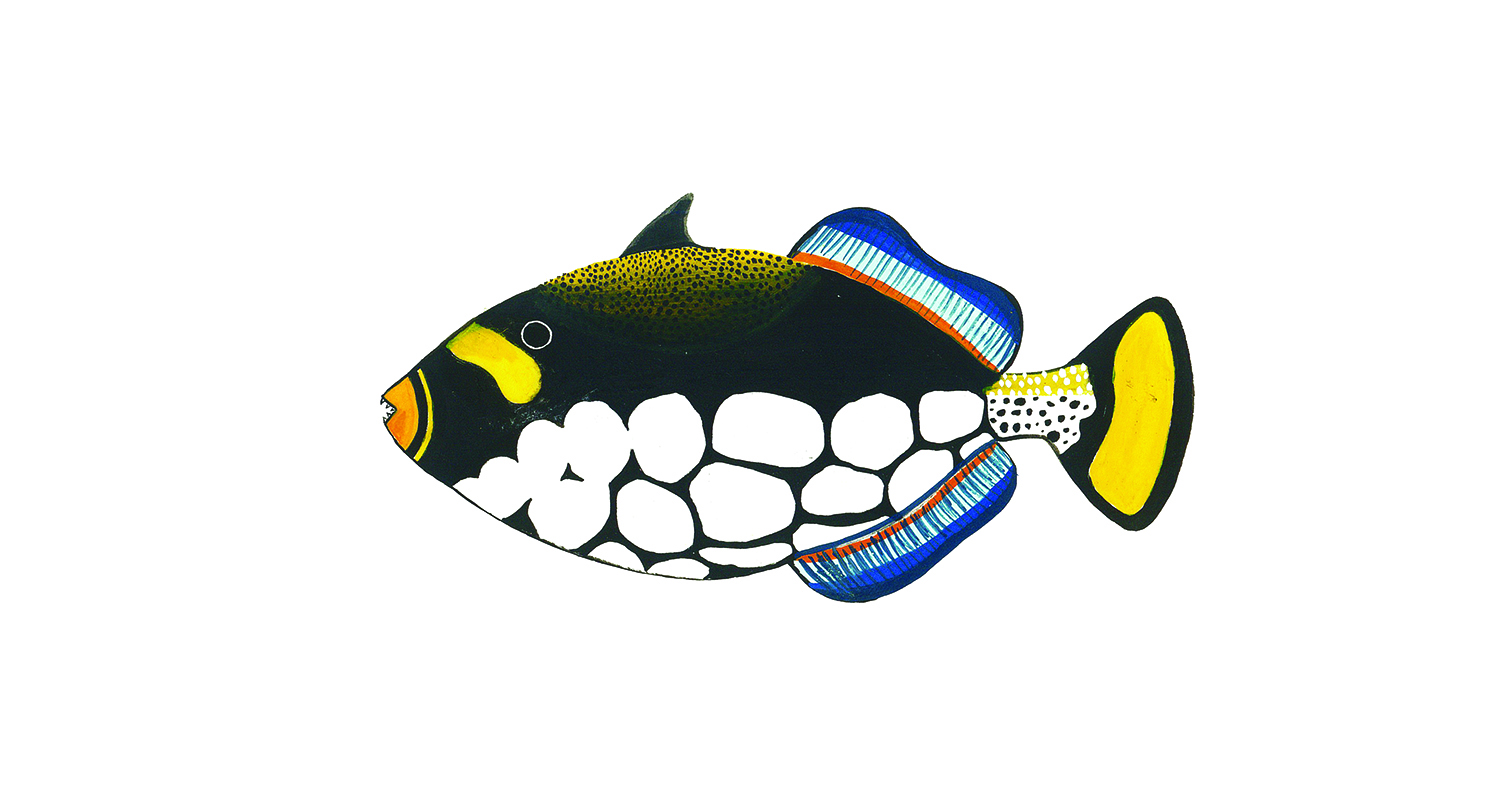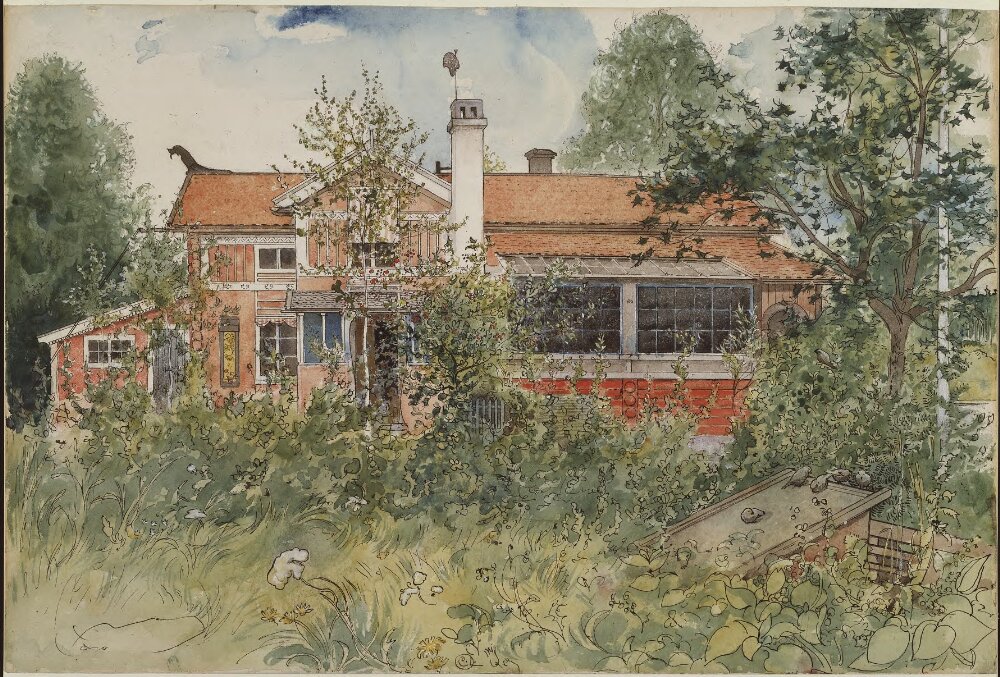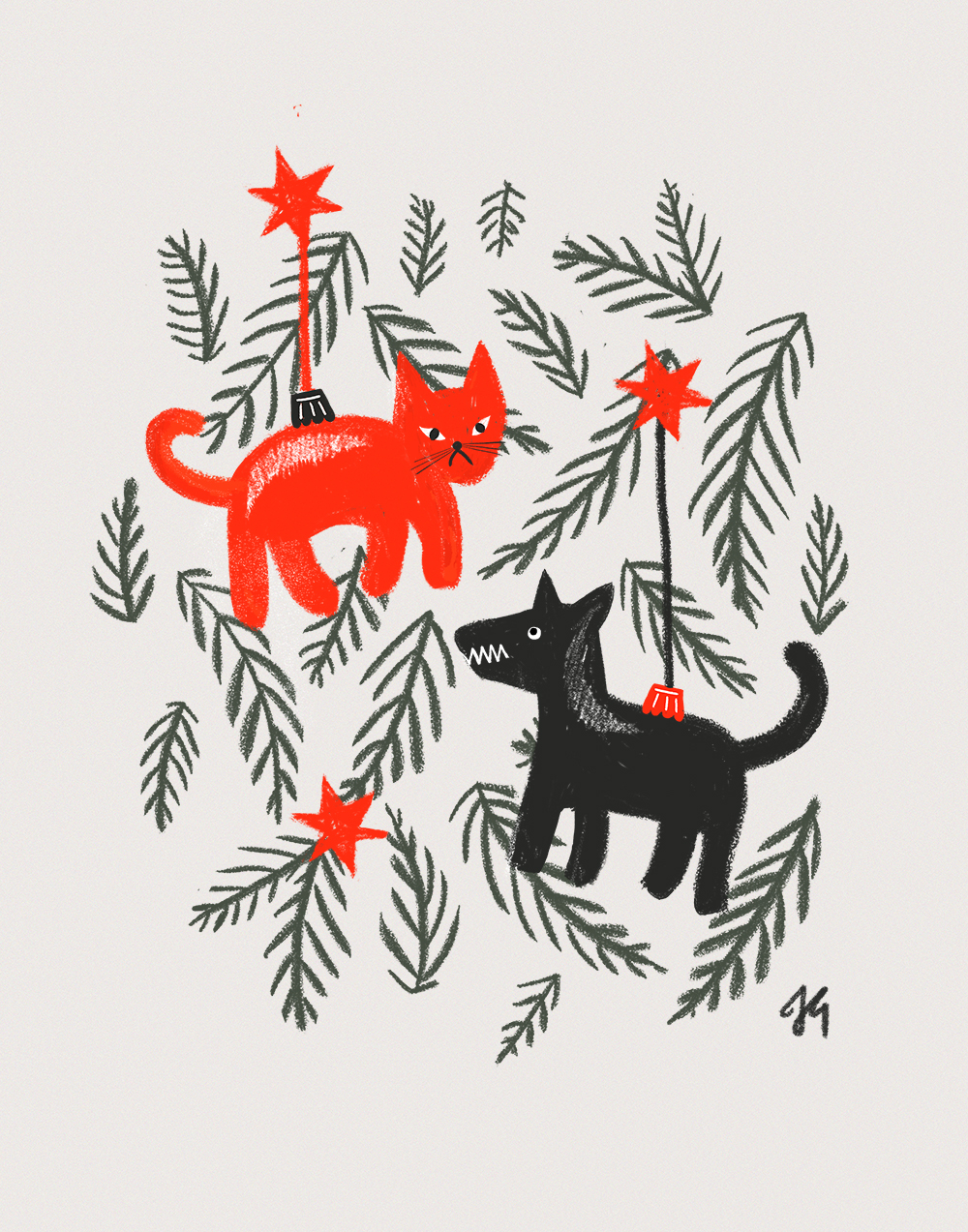
Which one of us never once crawled under the Christmas tree and begged Fluffy or Growler to utter just a word – childishly hoping for a Christmas miracle to happen? Well, since ’tis the season of Christmas miracles, I too decided to speak to you a bit differently in order to sound more human, and therefore, quite ironically, closer to an animal.
The Christmas tradition in Poland is strongly connected to animals. We believe that on Christmas Eve, they can speak our language at the stroke of midnight. Before Christmas dinner, we break a special coloured wafer with them: red, yellow or brown. Back in the day, we used to share all 12 dishes with the household animals; since the menu was subject to the Advent custom of abstinence from meat, pets and livestock could have some without the risk of cannibalism. Now I would like to take a closer look at the traditional Polish Christmas menu. Let’s consider what our festive eating habits looked like in the past, what we eat now, and how the Polish Christmas dishes reflect our relationship with animals. I don’t necessarily think all former traditions are worth reviving, but looking back at those dusty old customs, I have discovered some values I consider of particular importance today.
In Poland, Christmas Eve dinner is, by tradition, an Advent meal. True, the episcopate recently announced Catholics are no longer required to abstain from having meat on 24th December. Still, the level of social scepticism towards this new concession clearly shows how attached we are to Advent meals in the holiday season. Advent recipes mean no meat or butter are allowed, but fish is just fine. It can be difficult to explain the nature of an Advent dish to a foreigner. In Poland, everyone knows what Advent bigos is and what dishes are served for an Advent dinner. It’s not vegetarian, but it’s almost vegan, and by the way, the main course is fish, we say to our baffled friends from abroad. The lack of meat comes from the Christian requirement of fasting, which is based on giving up meat – but not fish, as it was not (and by some, still isn’t) considered meat. The lack of butter seems less understandable; this omission, setting apart Advent dishes from the regular vegetarian cuisine and bringing it closer to vegan, could be explained by the severity of religious abstinence customs of the past. In the 18th and 19th centuries, over half of the year was made up of days of religious observence, and many of those days were subject to strict abstinence, also excluding dairy and eggs. Many historians believe these restrictions were introduced to help poor farmers handle their poverty with dignity. But ethnographers add that the folkloric interpretation of the Bible was also an important factor in the shaping of the Christmas Eve menu. In many villages, the lack of meat on the table (even in well-to-do households) was founded on the fact that farm animals were present when Baby Jesus was being born. Therefore, by not eating meat, we honoured their participation in the Nativity of Christ.
The ethnographic perspective also allows us to better understand other animal-related customs and beliefs around Polish Christmas. The most popular one being the belief that household animals miraculously gain the power of human speech by midnight. It is a remnant of the Slavic winter festival Koliada, which celebrated the winter solstice and the beginning of the new solar year. The longest night of the year was supposed to be a time of magical occurrences; it was when our ancestors’ spirits would roam the Earth, water turned into wine, and animals spoke in human tongues. But before any of it could happen, one had to put away a spoonful of each Christmas Eve dish and share it with all the animals. If a cow or pig refused to eat the holiday cabbage, the food could be mixed with water in the trough. This custom was a way of thanking the animals for keeping Baby Jesus company in the stable, but also a symbol of our gratitude for their everyday hard work and feeding of the family. Then thanks were given for the third time during kolęda, when people shared the coloured wafer and bread from the holiday table with their livestock before sitting down at the Christmas table. I was wondering how one would break the wafer with a cow or goat, but having read several ethnographic papers from the Lublin region, I have learned that people would break off a bit of the wafer and place it on the cow’s tongue under the bread, so it wouldn’t spit it out by accident. In some villages, people would even share bits of the Christmas dinner with the animals before their own holiday meal. This was another way of thanking the animals for the milk, without which there would be no cheese, sour cream, curd or butter. And for their daily work, companionship, effort and shared life, often all the way into old age.
I find this animal-friendly layer of old Polish customs very touching, since it shows that we perceived animals as our friends and companions. And while I am well aware that the past might not always be the best teacher of how to build our relationships with animals, I also feel a pang of sorrow at the thought that nowadays, we have way less empathy for animals than we used to. How is it possible that we can pick and choose from hundreds of products in every shop and discuss the latest research on the emotional life of animals online – and yet we go ahead and lock up over two million dairy cows in intense industrial farming centres? This seems to be the irony of economic development; that civilizational growth does not match cultural progress. This dichotomy has worked for the success of industrial farming, which is the source of most of the dairy products found in supermarket refrigerators today. It is wonderfully effective and terrifyingly cruel at the same time.
You might be thinking that I’m just using a simple rhetorical trick. Perhaps my references to the traditional Polish empathy for animals are my way of putting you against the wall and suggesting that the only way of thanking the cows for their sacrifices is switching to a vegan diet right now. Not at all – this is not my intention. And you needn’t worry; I’m not going to discuss the horrible facts about the life of dairy cows, either. It would be too sad, both to me and to you, my dear, caring reader of “Przekrój”. Instead, I would like to employ our longstanding tradition of gratitude for animals that feed us and encourage you to choose one of two ways of expressing your appreciation. The first way would be limiting the number of dairy products you buy, or limiting your purchases to dairy from certified ecological farms. As for the second – you may find it impossible not to have your coffee with cow’s milk, but perhaps the idea of millet porridge with oat milk sounds quite nice. If so, give it a shot! Such change is very easy to make; there are several plant milk options available in almost every shop. And if it seems too difficult for you to give up dairy altogether, but your shopping budget is a bit more flexible, you might want to look for dairy products from certified, non-industrial farms. Who knows, perhaps their cows would be willing to share the wafer with us on Christmas Eve, or maybe even say those few magical words.
Christmas Hot Chocolate
For 2–4 servings:
4–5 dates
½ glass of red wine
3 cloves
1 pimento seed
Pinch of cinnamon
Pinch of ginger
1 bar of dark chocolate
3 tablespoons of oil, neutral in flavour
1–1 ½ glasses of water
1. Chop the dates in chunks, place in a small pot, add the wine, cloves, pimento seed, ginger and cinnamon. Cook on a low heat under the lid for 5–8 minutes. Then take the pot off the heat, take out the spices, pour the wine with dates into a blender jar, and blend until smooth.
2. Break the chocolate bar into pieces, put into the same pot you used before, add oil, and warm it up on minimum heat. Once the chocolate begins to melt, switch off the heat and mix the chocolate swiftly until it melts completely – this way it won’t burn.
3. When the chocolate is fully melted, add the wine blended with dates and enough water to achieve the consistency you like best. Serve after dinner instead of dessert, or with cake.


